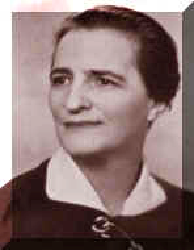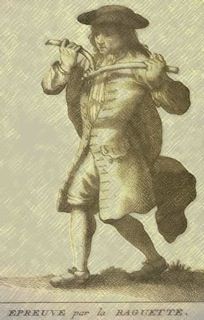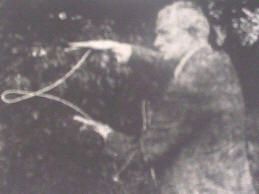Dowsing History: A Deep Dive into the Ancient Art of Divination
Dowsing History: A Deep Dive into the Ancient Art of Divination
The Essence of Dowsing
Dowsing, also known as divining or water witching, is an ancient practice that transcends time and culture. Defined as the use of an individual's natural sensitivity to find hidden or unknown objects, dowsing has been described by Raymond C. Willey, a prominent engineer and one of the founders of the American Society of Dowsers (ASD) in 1961, as: "the exercise of a human faculty, which allows one to obtain information in a manner beyond the scope and power of the standard human physical senses of sight, sound, touch, etc." This fascinating skill taps into a realm beyond our typical sensory experiences.
Another influential author, Chris Bird, simply describes dowsing as "searching for anything", with practitioners using various instruments such as forked sticks, pendulums, L-shaped metal rods, and even wands to enhance their ability to detect hidden forces or substances.
Tools of the Trade: The Instruments of Dowsing
A variety of tools are employed in the practice of dowsing. From the classic forked branch and Y-rods to pendulums and pendulum-type implements, each instrument serves a unique purpose. Whether it’s a simple stick or a more sophisticated pendulum, these tools share a common principle: they act as extensions of the dowser’s subtle energy sensitivity, enabling them to locate resources like water, minerals, and even health imbalances.
Commonly used dowsing tools include:
- Pendulums – Often used for finding hidden objects or diagnosing health issues.
- Dowsing rods – Typically made of metal or wood, these are held in each hand and react to the presence of certain energies.
- Y-rods and Witching sticks – Traditional tools for locating water sources.
- Bobbers – Similar to pendulums, but larger and heavier.
Practical Uses of Dowsing
Historically, dowsing has been primarily used for locating underground water sources, which has been vital for establishing drinking wells and irrigation systems. However, its applications have expanded over time to include a broad spectrum of uses, such as:
- Locating underground water – Essential for finding sources for wells and irrigation.
- Mineral and metal prospecting – Dowsers have been employed in commercial mining to identify precious minerals.
- Geopathic stress detection – Identifying areas of negative energy that may affect human health, especially in residential and commercial buildings.
- Health diagnosis – Dowsing is used to locate and assess areas of imbalance within the body, offering insight into potential treatment methods.
A Rich and Ancient History of Dowsing
Dowsing has an extraordinarily rich and varied history, with evidence of its practice dating back thousands of years across cultures worldwide. Historical references to dowsing tools and pendulums have been uncovered in the art and literature of many ancient civilizations.
6000 B.C.E. – The Earliest Known References
The earliest known depictions of dowsing date back to 6000 B.C.E., found in the Tassili Caves in southern Algeria. In 1949, explorers uncovered prehistoric wall murals depicting a dowser holding a forked branch, searching for water, surrounded by admiring tribesmen. These paintings are estimated to be over 8,000 years old, providing strong evidence of dowsing’s ancient origins.
Ancient Egypt and the Middle East
Dowsing had a significant role in ancient Egypt, where pendulums and dowsing rods were frequently used. Etchings discovered on the walls of 4,000-year-old Egyptian temples depict pharaohs holding devices resembling modern dowsing tools. The Cairo Museum even houses ceramic pendulums found in ancient tombs. Queen Cleopatra, famed for her wisdom and influence, was said to have employed dowsers throughout her reign.
The ancient Egyptians were also familiar with a magical rod known as the Ur-Heka, or “great magical power,” which was believed to summon water, much like the dowsing rods of today. The Bible, particularly in the Old Testament, references dowsing, notably in the stories of Moses and Aaron, who used a “rod” to locate water.
Biblical and Scriptural References.
Dowsing is alluded to in numerous biblical texts. In the Old Testament, the prophet Ezekiel recounts how King Nebuchadnezzar of Babylon used dowsers to determine the best city to attack—Jerusalem, which ultimately led to its siege and the Jewish exile. Dowsing was so ingrained in the culture that even the Queen of Sheba, known for her wisdom, reportedly used the technique for prophetic purposes.
Dowsing Across Civilizations
Dowsing was not confined to one region but spread across various cultures throughout history:
- Ancient China – Chinese Emperor Yu, who reigned over China over 2,500 years ago, was depicted holding a turn-pronged device resembling a dowsing tool.
- Greece and Rome – In Greece, dowsing was a known practice as early as 400 B.C. The Oracle of Delphi, who answered questions from kings and nobles, is believed to have used pendulums in her prophetic work.
- Celtic and Druidic Traditions – The ancient Celts and Druids of Europe used dowsing rods for divination and healing.
- Greek Influence – Homer, the blind Greek poet, referred to dowsing as Rhabdomancy, meaning “divining rod.” He used the term Caduceus, which has become a modern symbol of healing, symbolizing the entwined serpents associated with Asclepius, the Greek god of healing.
Dowsing in the Modern Era
Dowsing continued to thrive through the centuries, especially in Europe, where it found application in mining during the 1600s. Dowsers were brought to Cornwall by Queen Elizabeth I to assist miners in locating tin deposits. The 18th and 19th centuries saw dowsing gaining further popularity in mining circles, particularly in Germany and England.
In the 20th century, renowned scientists such as Albert Einstein, Isaac Newton, and Thomas Edison expressed interest in dowsing, with Einstein even practicing it himself. The phenomenon of dowsing has intrigued many, with some believing it may one day be explained by modern science.
During World War II, General George Patton employed dowsers to locate vital military assets, such as landmines and ammunition dumps. This historical use of dowsing further cemented its legitimacy and practical applications in military and strategic operations.
The Revival of Medical Dowsing
In the 1920s, dowsing found a new avenue in the field of medicine. Medical Radiesthesia, an offshoot of dowsing, emerged as a healing practice that used pendulums and dowsing rods to diagnose illnesses and imbalances within the body. Radionics machines, which can be thought of as more advanced versions of pendulums and dowsing rods, were developed in the early 20th century, and medical doctors adopted them for their healing potential.
Dowsing in the 21st Century
Today, dowsing continues to be practiced by individuals across the world, from those seeking to locate underground resources to those using it as a tool for healing. The continued fascination with dowsing speaks to its deep cultural roots and its lasting relevance as a tool for understanding and interacting with the unseen energies that influence our world.
From ancient Egypt to modern medical practices, dowsing has proven itself to be more than just a tool—it is a window into the mysteries of the earth and the human body. Whether used for divination, health, or scientific inquiry, dowsing remains a vital and powerful practice, keeping its place in both ancient and contemporary societies.







